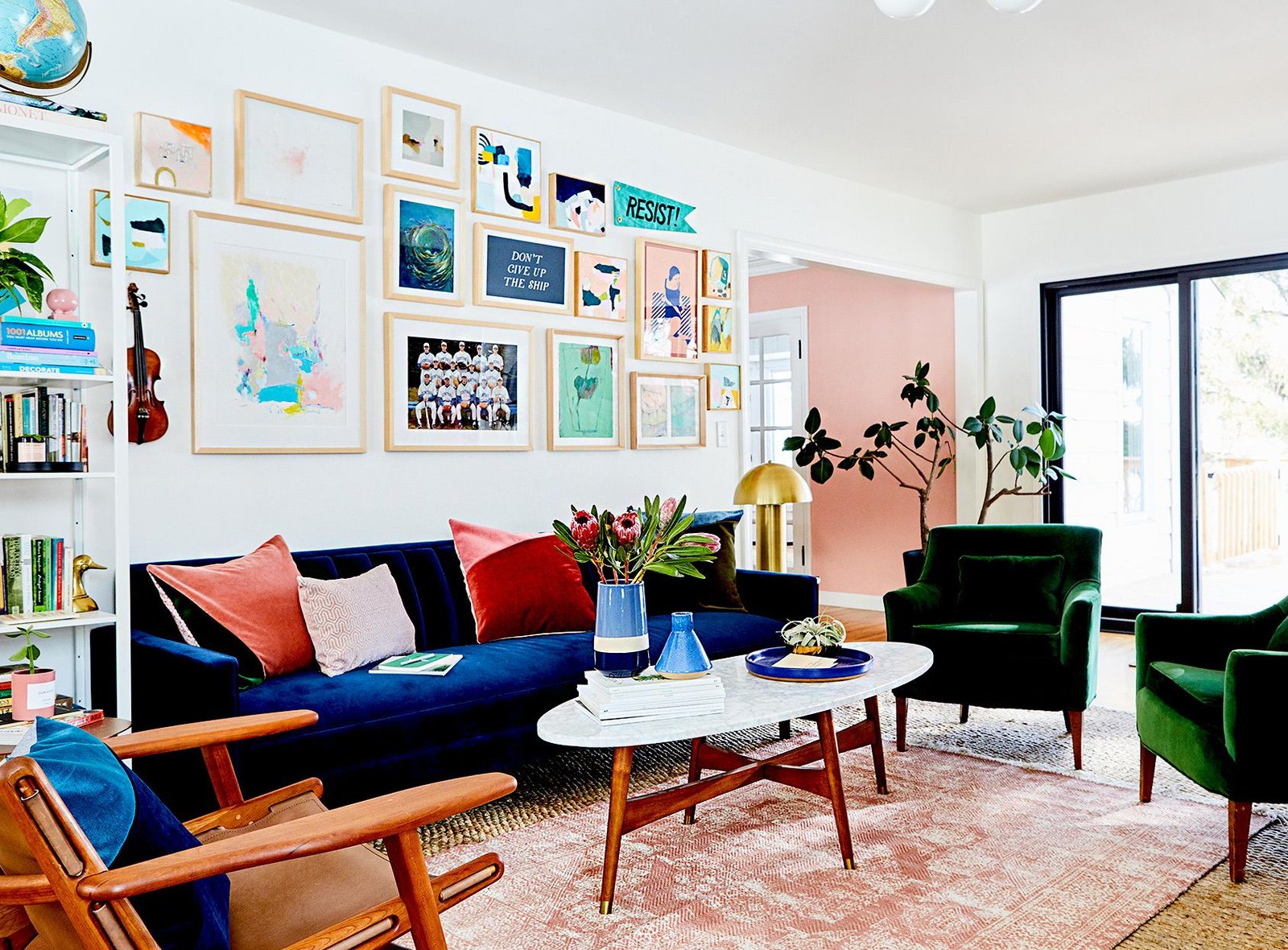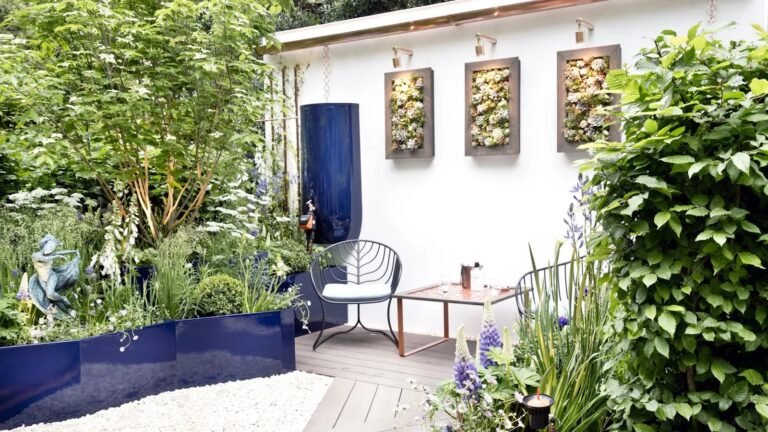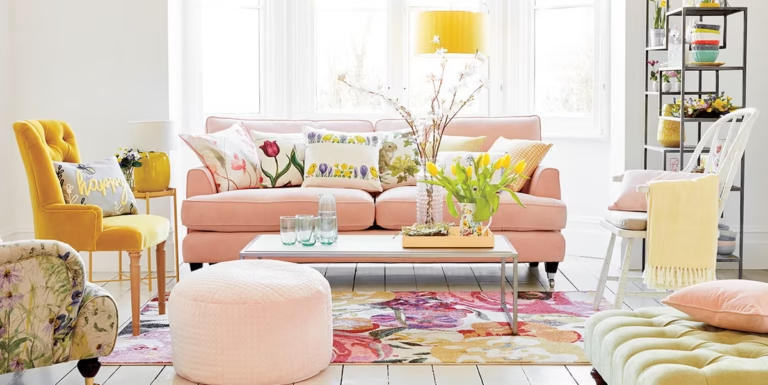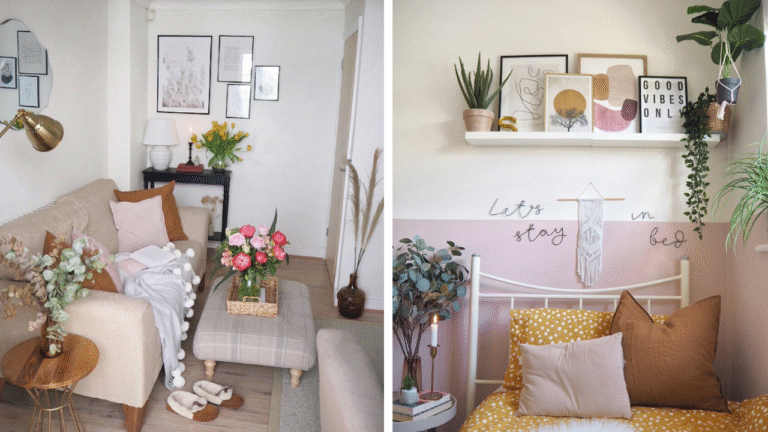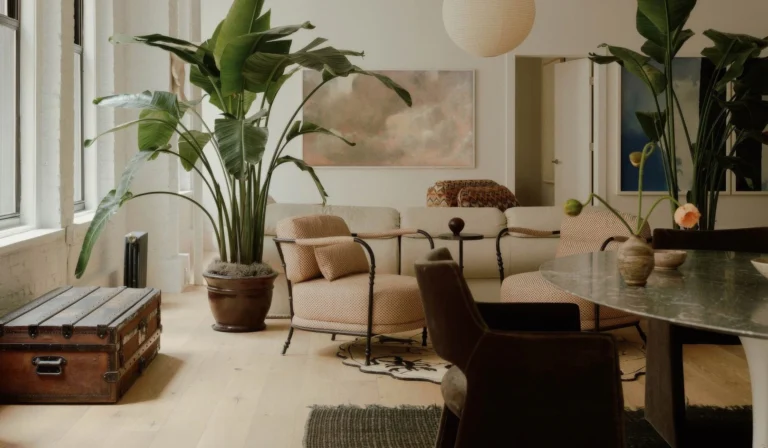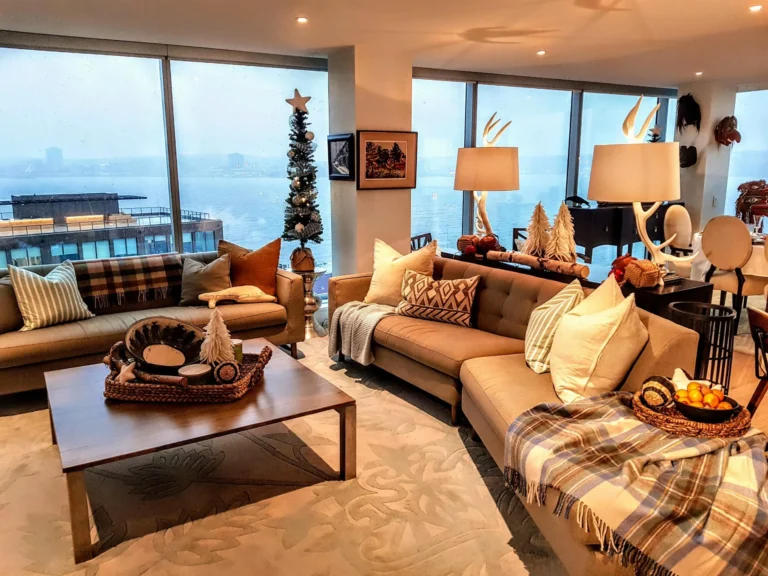How to Choose the Right Color Palette for Your Home?
When it comes to interior design, choosing the right colors for your home is one of the most important things. Color can change your mood, make a room appear larger, or enhance the overall style. Whether you’re renovating a single room or the entire house, choosing the right color scheme can make any space feel calmer and more welcoming. In this article, we’ll discuss some important rules and tips for choosing the right color scheme for your home.
How Does Color Affect Your Home’s Exterior?
Color is one of the most important aspects of interior design. It can define the atmosphere of a space, change its size, and even influence your mood. Cool colors like blue and green, for example, are known for their calm and peaceful feel, making them ideal for bathrooms or bedrooms. Warm colors like red, orange, and yellow, on the other hand, can make a room feel more vibrant and inviting. This makes them ideal for kitchens and living rooms.
Choosing the right colors for a room makes it feel more cohesive. You can also draw attention to architectural elements, furniture, and decorative items. Whether you prefer bright, bold colors or soft, neutral tones, color is an effective way to create a space that suits your style and enhances your lifestyle.
Consider the room’s purpose
The purpose of a room is a crucial factor in choosing colors. Every room in your home has different needs, and the colors you choose should reflect these.
The living room is often the main gathering place in the home, so it’s best to choose a color scheme that encourages relaxation, conversation, and leisure. By combining accent colors like blue or teal with soft neutrals like beige, taupe, or light gray, you create a warm and cozy space. The colors you choose for your bedroom should make you feel calm and at ease as you drift off to sleep. Soft blues, greens, and soft purples are ideal for creating a peaceful sleep environment.
The kitchen is both a place to cook and a place to gather with friends and family, so it’s crucial to choose colors that make you feel energized and at home. Warm colors like orange, red, and yellow can stimulate your appetite and spark conversation. Cool colors like white and light gray can create a clean, fresh atmosphere. Bathrooms are often smaller spaces. Light blue, soft gray, and white create an open and airy feel, while dark blue or green create a more luxurious feel.
Create a flowing home
When choosing a color scheme for your home, it’s crucial to maintain a sense of unity between the spaces. Each room should have its own style, but the colors should coordinate to create smooth transitions between rooms. In open-plan homes, where the kitchen, dining room, and living room are often connected, a unified color scheme can enhance the overall aesthetic. Start by painting the walls a neutral color. Then, add color to the rooms with furniture, fabrics, and other items.
People often overlook hallways and spaces between rooms, but these are crucial for maintaining a flowing space. To ensure a smooth transition between rooms, choose neutral or muted tones for these spaces.
Understand the psychology of color
Color psychology studies how different colors influence people’s feelings and behavior. By understanding how different colors affect people psychologically, you can create the desired atmosphere for any room. Cool colors like blue, green, and purple have a calming and soothing effect. Therefore, they are ideal for bedrooms, bathrooms, and other spaces where you want to relax. These colors are also known to make a room appear larger.
Red, orange, and yellow, on the other hand, are warm colors that can make people feel energetic and relaxed. These colors are ideal for high-traffic areas such as living rooms, dining rooms, and kitchens. Neutral colors like white, gray, beige, and brown can be used in many ways and create a calm, balanced atmosphere. Neutral colors are great as a backdrop, allowing other design elements like artwork and furniture to stand out.
Testing Paint Samples
Once you have a few color options, be sure to test paint samples in your room before making a final decision. Paint colors can vary significantly depending on the brightness, size, and other elements of the room. A color that looks good on a paint sample can look completely different on the wall.
Artificial light can make colors appear more intense, while natural light can make them appear lighter and more muted. To see how paint looks at different times of day, test it under the following conditions:
Ladies, to create a cohesive whole, your color scheme should complement these elements.
Use accent colors to fill in gaps and add interest
While a room’s primary color sets the mood, secondary colors can add depth, contrast, and personality. You can use accent colors in lighting, furniture, artwork, throw pillows, and rugs. Adding an accent wall is a great way to add interest to a room without looking too busy. To create a focal point, choose a different color than the other walls.
To add pops of color without overwhelming the room’s overall look, use accent colors in fabrics like pillows, curtains, and furniture.
Popular color schemes worth considering
Here are some common color choices that complement different interior styles:
For modern minimalism, choose soft whites, cool grays, charcoal gray, and subtle touches of black and metallic. This color scheme works well in living rooms and offices. Light blue, white, soft green, and beachy neutrals create a clean, airy feel, perfect for bathrooms and beach houses. If you’re aiming for a bohemian-inspired home, consider pairing warm earth tones like terracotta, mustard yellow, and deep green with bright accents of red, purple, and blue for a playful effect. Deep blue, rich gold, creamy white, and soft brown create a timeless, elegant atmosphere in dining rooms and master bedrooms.
FAQs
1. How do I choose a color palette for a small room?
For small rooms, opt for light, neutral colors that will make the space feel larger. Lighter shades like whites, creams, and pastels can open up the room. Additionally, using mirrors and reflecting light can help maximize the space.
2. Can I use dark colors in my home?
Yes, dark colors can add drama and sophistication to a room. However, it’s important to balance them with lighter colors or accents to prevent the space from feeling too enclosed. Use dark colors on accent walls or furniture and pair them with neutral tones.
3. What’s the best color for a living room?
Neutral tones like beige, gray, and taupe provide a versatile backdrop, making them perfect for a living room. You can add bold accent colors through cushions, art, or curtains for personality.
4. How can I make my home feel cozy with color?
Warm, rich colors like earthy reds, oranges, and browns can make a home feel cozy and inviting. Pair these with soft textures and fabrics like plush throws and rugs to enhance the feeling of comfort.
5. Should I use the same color scheme throughout my entire house?
While it’s not necessary to use the exact same color palette in every room, maintaining a cohesive flow between spaces helps create harmony. You can use different shades of a color or introduce accent colors that tie rooms together.
Conclusion
Choosing the right color palette for your home is a key element in creating a cohesive, welcoming, and functional space. By considering the purpose of each room, understanding color psychology, and testing out samples, you can select a palette that enhances your home’s beauty and atmosphere. Remember to use accent colors for added interest, and don’t be afraid to experiment with different hues. With the right approach, your home will feel like a perfect reflection of your style.
References
- “Color Psychology: How Color Affects Your Mood,” Psychology Today.
- “How to Choose Colors for Your Home,” HGTV.
- “Understanding Color Palettes in Interior Design,” Architectural Digest.
